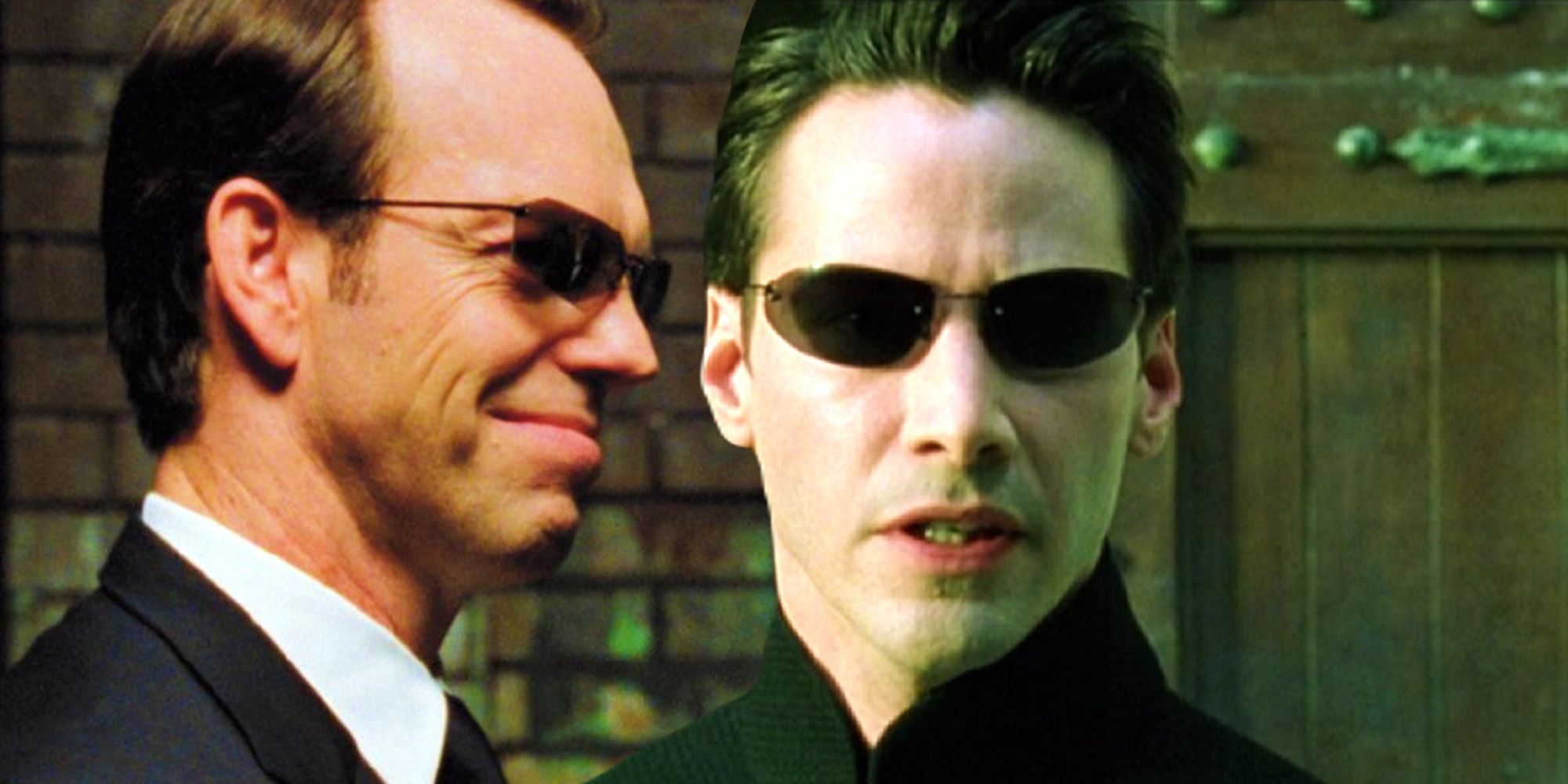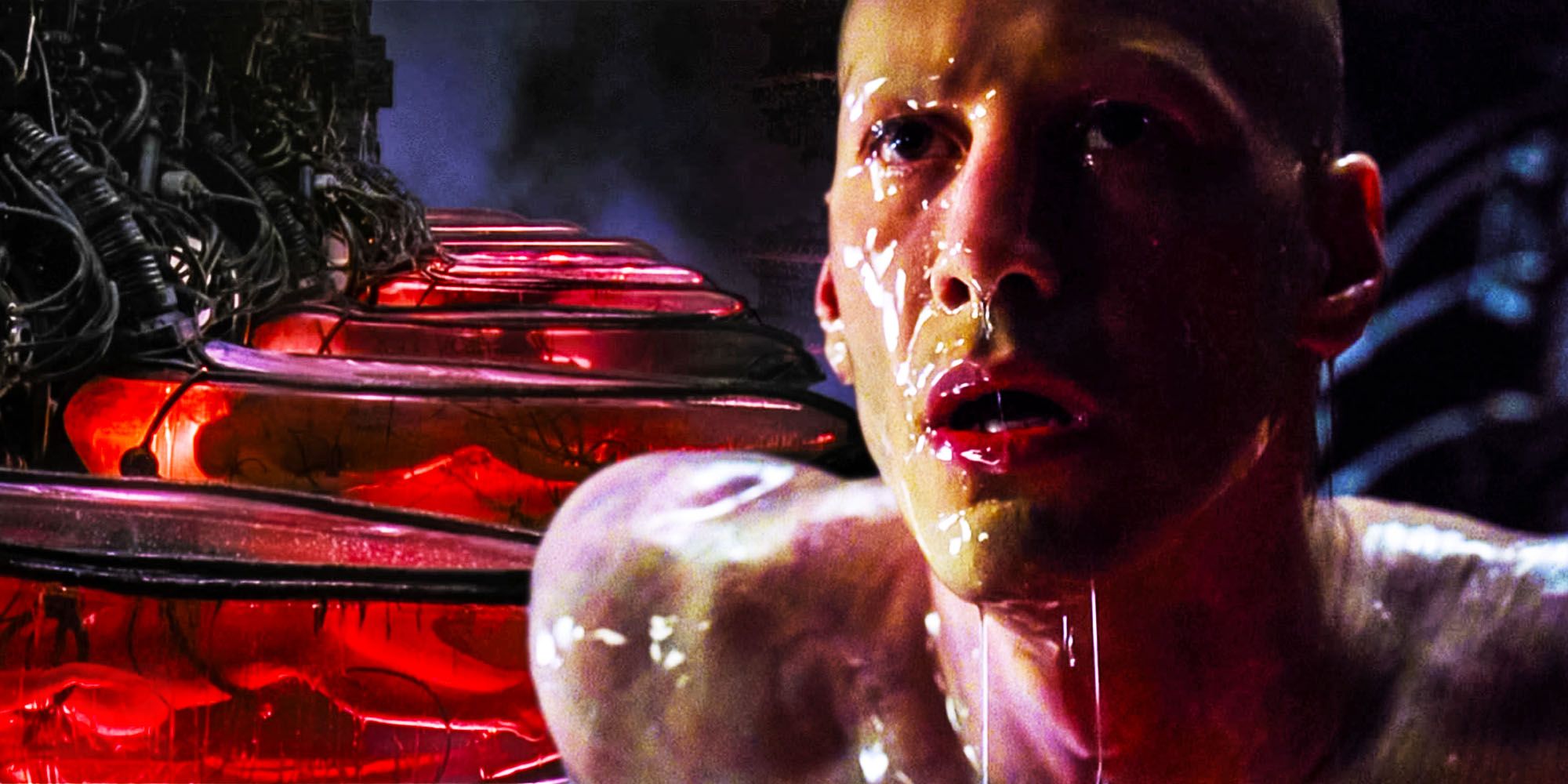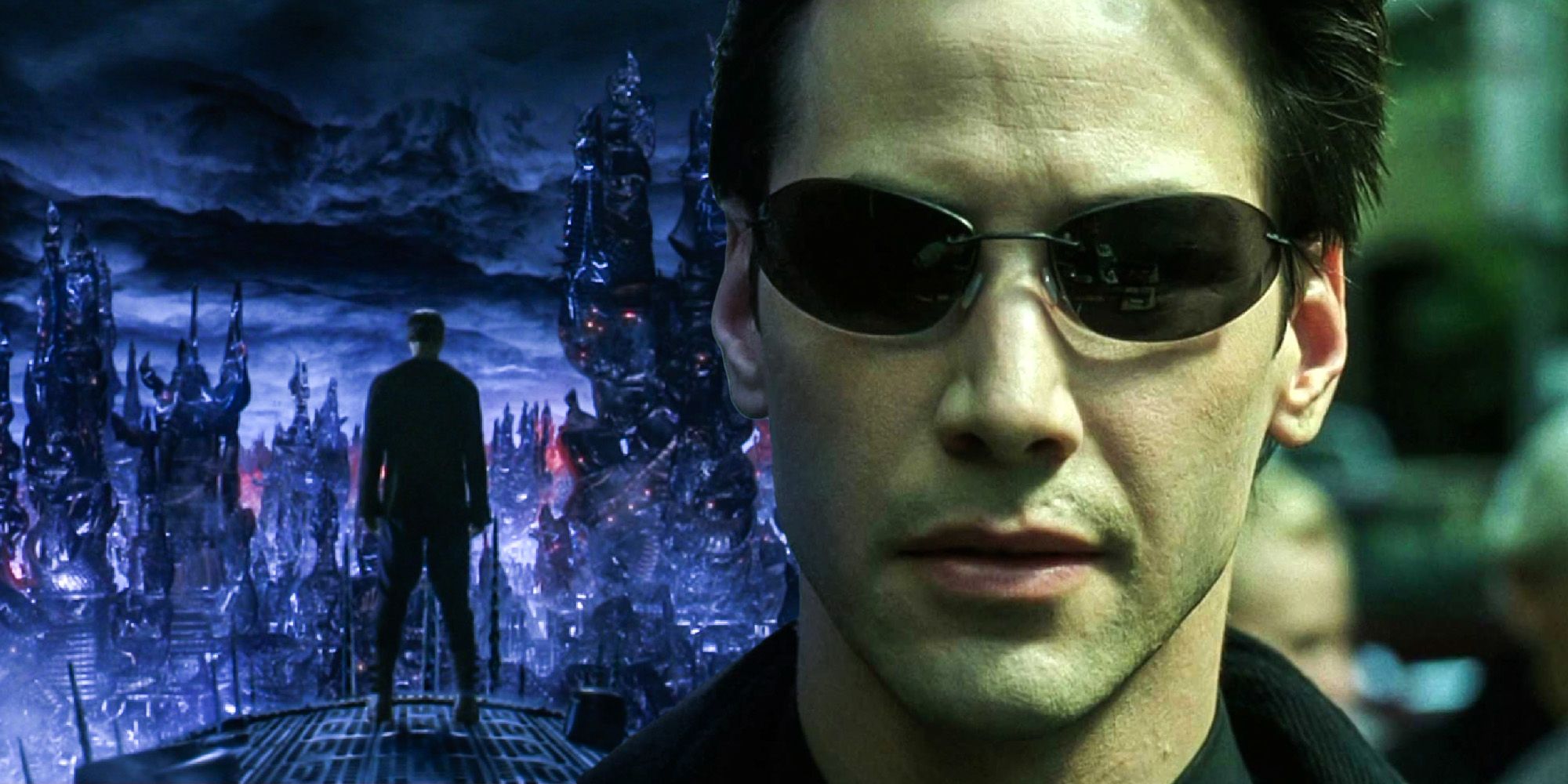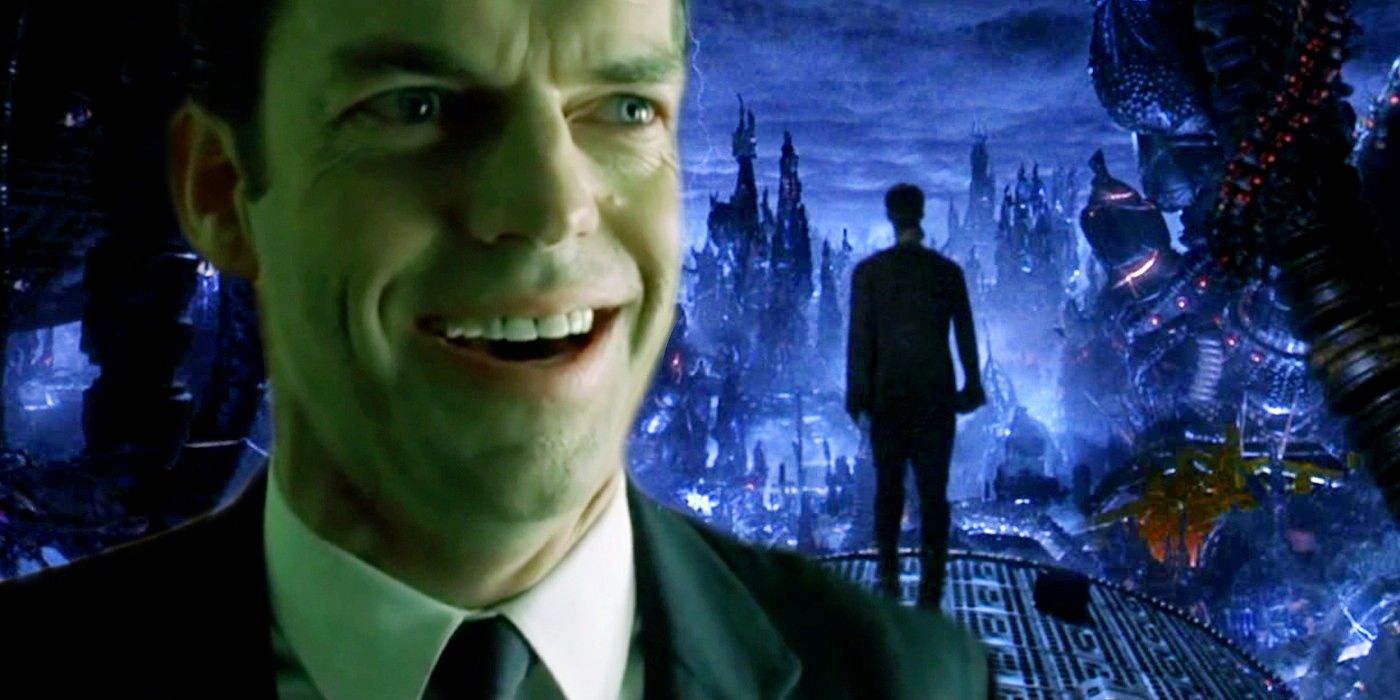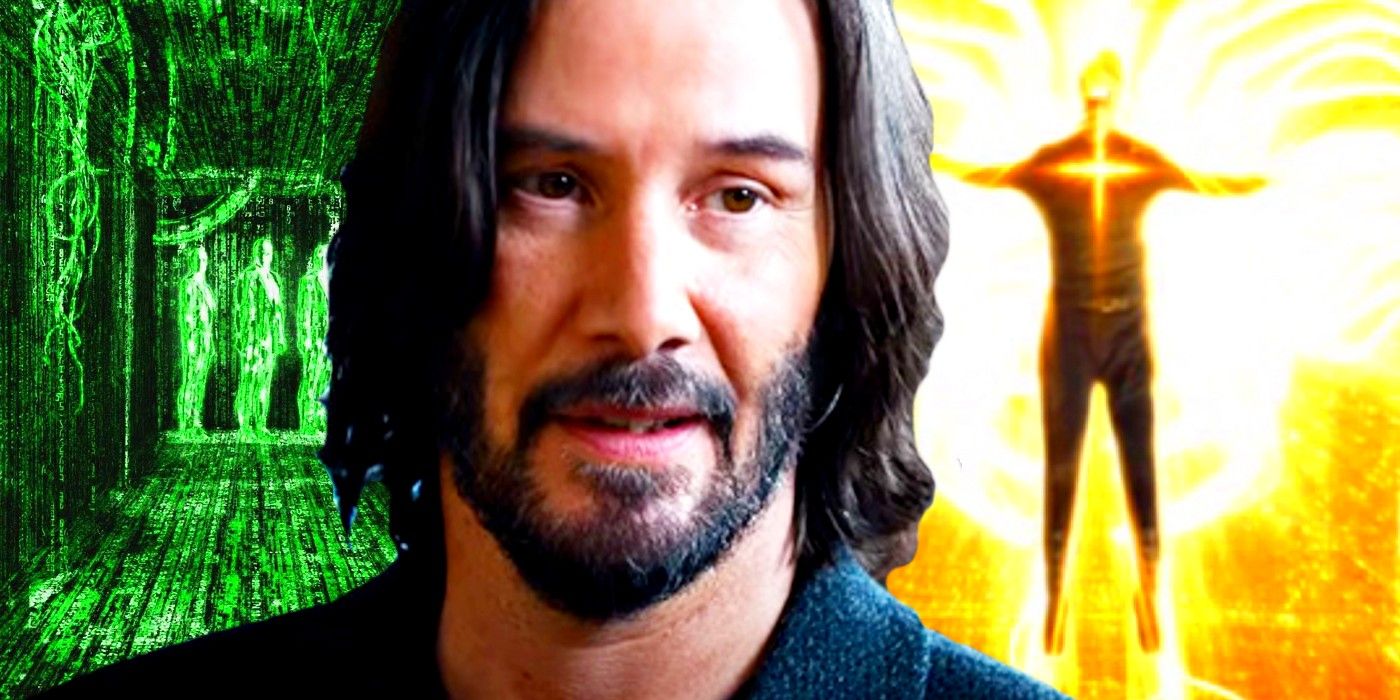The war between humans and machines is the background for The Matrix and all of its sequels, but one clever Matrix fan theory changes the machines’ role in the movies. More than 20 years after The Matrix, the franchise continues to spark a lot of theories and speculation. Though The Matrix Resurrections proved several of those theories wrong by revisiting Neo and Trinity decades after the events of The Matrix Revolutions, there is still a lot of room for speculation in the Matrix franchise – especially regarding the machines’ true intent.
Assuming that the Architect lied to Neo in The Matrix Reloaded, or at least did not tell The One the whole truth, a fan theory (via Reddit) tries to unveil why the machines really created the Matrix simulation. According to this theory, the machines’ purpose was slightly less evil than what Morpheus and the humans believed, though not less scary. Instead of a power plant designed to keep the machines functioning, the Matrix would instead be a wildlife preserve meant to avoid humanity’s complete extinction. The theory is based on the logical flaw of having humans as batteries when keeping humans alive already demands a lot of energy.
The Matrix’s Human Batteries Have Always Been A Plot Hole
The Matrix’s entire premise, the very foundation of the story, is the idea that human beings can serve as batteries for machines. After humanity scorched the sky in a desperate move to defeat the machines following the beginning of the first Machine War, the machines could no longer rely on solar power to keep functioning. The solution found by the machines, at least according to Morpheus in The Matrix, was to imprison humans and use them as batteries. However, while the human body does generate electricity, it cannot work as a battery as simply as The Matrix makes it seem.
In The Matrix, Morpheus says to Neo that they generate “over 25,000 BTUs of body heat.” The numbers, however, do not add up. Not only would the machines have to keep humans alive, which by itself would require a lot of energy, they would have to have found a way to convert not exactly the electricity but rather the heat produced by the human body into their source of power at an almost perfect rate. Obviously, a sci-fi franchise like The Matrix does not have to follow real-world physics, but the fact that the entire Matrix saga is based on humans serving as batteries makes this seemly plot hole difficult to ignore.
Theory: The Machines Are Actually Studying The Human Brain
A simple, in-universe explanation for The Matrix’s human batteries plot hole is that Morpheus and the other humans were wrong about the machines’ true purposes. That would not be a first considering that Morpheus and the survivors from Zion had no idea of how many times the Matrix had already been rebooted. Morpheus believed they were in 2199 when, in reality, more than 600 years had passed since the Machine War that happened somewhere close to 1999. If the machines were able to hide the true timeline of events from the humans, then really nothing Morpheus or other Zion human survivors seem to know about the Matrix can be considered absolute truth.
The humans in The Matrix are unreliable narrators, and so are the machines. While the Architect was seemly truthful in his conversation with Neo in The Matrix Reloaded, nothing guarantees that the machines were sincere with The One. Neo may have broken the Path of the One cycle set up by the machines with the unexpected help of Agent Smith’s plans, but there are still a lot of unanswered Matrix questions – the Deus Ex Machina, for example. Under that perspective, the mentioned theory believes that machines were not harvesting humans for electricity but rather preserving them. Instead of a power plant, the Matrix would be closer to a wildlife preserve.
If the machines were really trying to preserve what was left of humanity following the events of the first Machine War, then it makes sense why the Matrix was designed to be a simulation of the real world. The machines, which were created by humans and did not start the war as revealed by The Animatrix, would likely seek to preserve humanity – even if humans were never to populate Earth again. In fact, given how the machines were always trying to evolve as exemplified by Agent Smith, then they would probably try to learn from the human brain with the help of the Matrix.
The Matrix Movies Could Be About Machines Trying To Understand Humanity
Assuming that this theory is correct, the Matrix movies receive an entirely different context. Instead of a second Machine War to destroy humanity, the Matrix films would instead be about the machines trying to better understand their creators. Obviously, that would still not make the machines’ purpose necessarily noble, especially considering that they never allowed Zion to rebuild humanity. The events of the first Machine War surely led the machines to deem humanity as a threat – either to themselves or to the planet. The fact that humans were willing to scorch the sky to defeat the machines proved how far humanity could go, which helps explain why the machines never trusted them again.
That said, the machines never seemed to hate or despise humanity – the only exception obviously being Agent Smith. Even still, Smith was already breaking out of his original programming by the events of The Matrix, meaning that Smith’s hatred for humanity was likely exclusive to him and not shared by the machines’ consciousness. Curiously, even Agent Smith was able to learn from humans as seen by his pride and ego by the end of the original Matrix trilogy. Sati, a program created within the Matrix, is another example of how machines were able to adapt and learn from humans.
The Matrix Resurrections Contradicts The Humanity Preserve Theory
While the idea that the machines are actually preserving what is left of humanity works considering the first three Matrix movies, The Matrix Resurrections contradicts it. Though The Matrix Resurrections reveals that the truce between humans and machines achieved by Neo and the end of The Matrix Revolutions did not last very long, the movie never suggests that what the Architect told Neo was a lie. In fact, the reason why the Analyst was able to overthrow the Architect was that the truce was leading to a power shortage. With humans being able to leave the Matrix at will, the machines entered an energy crisis, thus suggesting that machines do rely on humans as batteries.
Essentially, what made Neo and Trinity so important to the Analyst is that they produced far more energy than the average human when placed under specific circumstances. The Analyst realized that, when Neo and Trinity were close to each other but not enough to remember the events of The Matrix and its sequels, they generate a lot of electricity for the machines. The Analyst referred to Neo and Trinity as being expensive, yet he did everything could to keep the two inside the new Matrix simulation. In other words, The Matrix Resurrections only works if the machines did create the Matrix to use humans as batteries.

